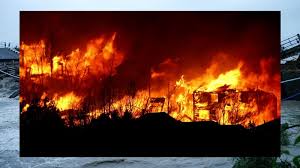Natural Disaster
By Sukhmandeep Kaur
Types and Causes
The well-being of the populace is threatened by disasters, which also
put a strain on social safety nets, halt socioeconomic advancement, and
necessitate intricate aid and recovery measures. Tens of thousands of
people have died in natural catastrophes in Indonesia, Sri Lanka,
Pakistan, China, Haiti, and Japan in the past ten years alone.
Some of the examples of natural disaster include the following:
- Earthquakes
- Floods
- Tsunamis
- Wildfires
- Hurricanes
- Droughts
- Landslides
- Tornadoes

There are several categorization systems for natural hazards in use
across the world, and each has benefits. This book aims to highlight the
need for a categorization scheme that is universally understandable as
long as there isn't a single, globally accepted system. Natural risks
are often categorized into these primary groups:
1. Geotectonic hazards:
Natural
processes that originate in the Earth's crust are known as geotectonic
hazards. This motion enables the formation of oceanic ridges, mountain
ranges, and subduction of oceanic plates beneath continental plates.
These motions serve as the catalysts for mass movements, earthquakes,
volcanic eruptions, and land elevation or subsidence.
2. Hydro
meteorological hazards: Natural phenomena that originate in the
atmosphere of the Earth. They are in charge of the changes in the
climate that lead to storms, droughts, flash floods, and other extreme
weather events.